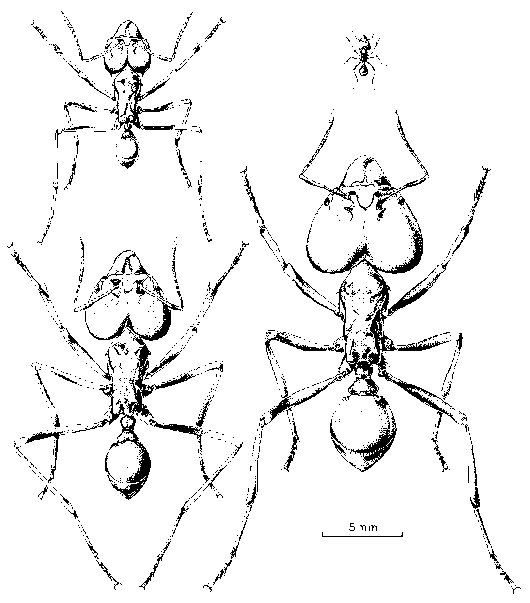The Photographs of
Edmund Teske
Julian Cox, Editor
(Getty)

According to the editor, in Vedanta, "since the soul is regarded as immortal and divine, it is both birthless and deathless; it has no beginning and no end. Consequently there is no absolute destruction or annihilation of anything." How does this apply to his photography?
- By the practice of composite printing, in which two or more negatives are combined (either under the enlarger or though successive cycles of copying), Teske hoped to dematerialize fixed notions of time and space and reconfigure them in a new reality ... For Teske, the negative was never static or finished ...
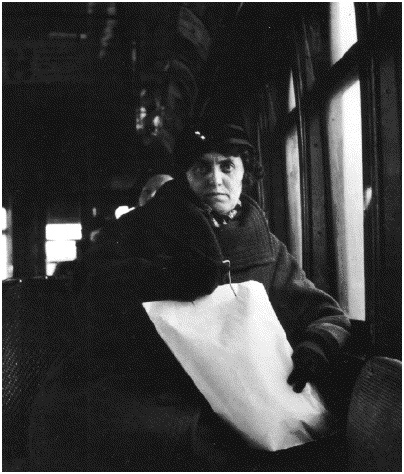 Well, maybe: who are you and I to penetrate the mind of an oddity like Teske. His poetry --- some of it reproduced here --- is genuinely awful. The later photographs certainly have a touch of weirdness to them. He photographed Jim Morrison and married him to the negative of "parched and cracked vinyl seat cushions." He fell in love with the barren Mono Lake of the California desert, and merged --- through combining negatives --- some of his older photographs with the bleak stands of tufa. He was an endless recycler of his own stuff.
Well, maybe: who are you and I to penetrate the mind of an oddity like Teske. His poetry --- some of it reproduced here --- is genuinely awful. The later photographs certainly have a touch of weirdness to them. He photographed Jim Morrison and married him to the negative of "parched and cracked vinyl seat cushions." He fell in love with the barren Mono Lake of the California desert, and merged --- through combining negatives --- some of his older photographs with the bleak stands of tufa. He was an endless recycler of his own stuff. His big project which he worked on during his last years was A Song of Dust. It was his autobiography, and consisted of seventy-two prints and two poems. He constructed six of these volumes.
One doesn't have to be a psychologist to suggest that much of Teske's artistic set grew out of his sexuality. He was gay in an era when it was dangerous to be gay. (The word "gay" scarcely existed; the preferred terms, at least for the psychologists, was "invert." For the police it was "queer.")
Teske was born in 1911. In the years of his early manhood, it was a felony for a man to be caught in a compromising position with another man. Police regularly sent out undercover agents to entrap those who frequented the "tea-rooms" and bars. Detectives were encouraged to break down doors of apartments or houses of suspected homosexuals in order to catch them in flagrante delicto.
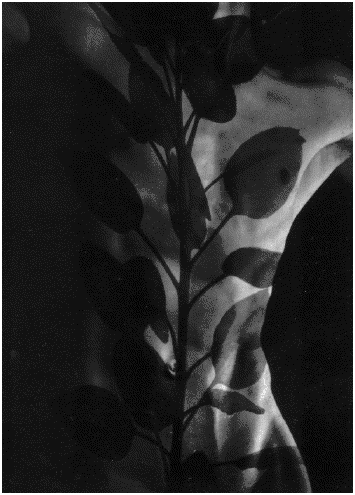 To survive in such a culture one had to adopt protective coloration. Teske knew that the revealing photographs he took of his friends in the 1930s could never be shown publicly. The only way to show naked male bodies would be if they were in some way manipulated so they could be called "art."
To survive in such a culture one had to adopt protective coloration. Teske knew that the revealing photographs he took of his friends in the 1930s could never be shown publicly. The only way to show naked male bodies would be if they were in some way manipulated so they could be called "art."
Thus he married photographs of the young and the beautiful to trees, leaves, farmhouses, and even churches. One photograph of Richard Soakup --- an early and wonderfully named lover --- is reproduced again and again, blended with other objects which soften, even hide, his quite explicit and lusty image. I would guess it was the safest way for Teske to advertise (to those in the know) and at the same time hide (from those who didn't) what was at the time a definite legal hazard.
For some of us, the tricks of his later photographs should not obviate the genuine art of his earlier ones. In Teske's hands, store-window mannequins take on an ominous air. Passengers on streetcars look desperate, trapped by the bars that were fitted onto the windows. Houses are dark, oppressive, isolated, alone. Even his photographs of the buildings of his much-admired (and occasional friend) Frank Lloyd Wright have a furtive, bleak air.
A good photographer shows much of himself or herself through what comes out of the darkroom. Edmund Teske was a haunted man, haunted by his own fears, and by the fears that an oppressive, Puritan society forced on him. The truth of it shows, and shows powerfully, in these works.
Charlotte Sleigh
(Reaktion Books)
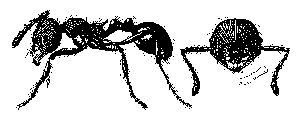
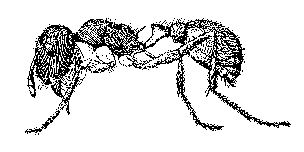
Æsop is here, Walt Disney too. We get all the classical stories and one from Edward O. Wilson. In fact, his is one of the few great stories in a book that should be packed with interesting and amazing ant stories. It's a tale of "small, yellow ants" from South American that somehow got free in his laboratory, playing havoc with all the essentials:
- Here and there yellow ants quickly covered food left out after lunch or afternoon tea. Portions of breeding colonies ... appeared miraculously beneath glass vessels, in letter files, and between the pages of notebooks. But most alarming, researchers found the ants tracking faint traces of radioactive materials from culture dishes across the floor and walls. An inspection revealed that a giant unified colony was spreading in all directions through spaces and walls of the large building.
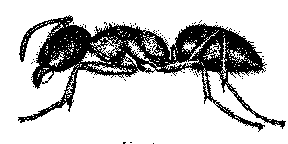 Wonderful. Those who study the creatures being driven out of their minds by those who were supposed to be resting benignly under the microscopes. "Wilson's silently spreading supercolony was a cancerous growth subverting every aspect of life in the Harvard laboratories, from the recording of information to the execution of experiments, and to humans' social interactions over food." Wilson called it "the revenge of the ants."
Wonderful. Those who study the creatures being driven out of their minds by those who were supposed to be resting benignly under the microscopes. "Wilson's silently spreading supercolony was a cancerous growth subverting every aspect of life in the Harvard laboratories, from the recording of information to the execution of experiments, and to humans' social interactions over food." Wilson called it "the revenge of the ants."
- Emulating ants does not improve one's character. A person with the moral qualities of an ant would be terrifyingly empty. And I have not learned much about people from watching ants. People remind me of ants only when seen from so far away that they no longer resemble people; in the movie Titanic, the passengers scrambling up the sinking hull seemed to behave like ants.
